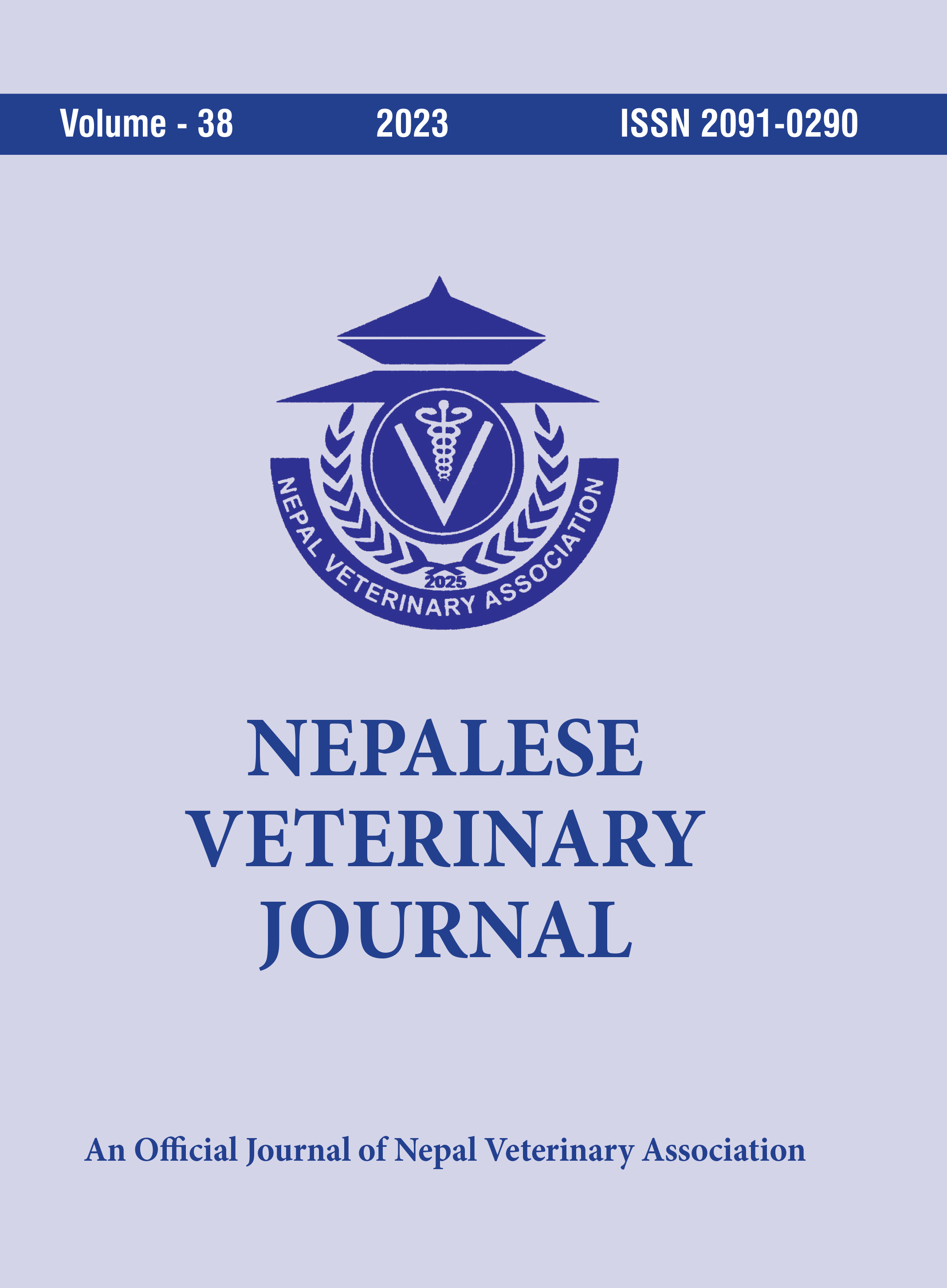Study on Management Status and Disease aspects of Pheasant (Phasianus colhicus) of Kathmandu Valley, Nepal
DOI:
https://doi.org/10.3126/nvj.v38i1.55849Keywords:
Pheasant farming, Kalij, Disease distribution, Management practicesAbstract
Even though Nepal has several wild pheasant species, captive pheasant rearing for human consumption is a relatively new farming practice in Nepal. Pheasant farming is a growing practice among Nepalese farmers. However, farmers lack understanding and background in pheasant management techniques and associated diseases. The purpose of this study was to investigate the distribution, location, management status, and disease characteristics of commercial pheasant farming in the Kathmandu valley. A retrospective cross-sectional study was conducted in Kathmandu valley and the Central Veterinary Laboratory (CVL), from July to September 2021. The case records from 2017 to 2021 were analyzed at CVL and the farms were mapped based on their locations. The top ten pheasant diseases reported in CVL were identified and the disease outbreak farms were followed to get additional information on management aspects. A total of 42 pheasant farms were visited to collect data, and dead birds from these pheasant farms were submitted to CVL for postmortem and bacterial culture. MS-EXCEL and the online software “Open Epi” were used for statistical analysis. Sixty percent of the surveyed farms exclusively raised pheasants, while 40 percent practiced mixed farming. The source of hatching eggs was from abroad (12%), local breeding center (70%) and inter-district farms (18%). Ninety percent of the farms practiced some extent of biosecurity such as clothes changes and visitors log maintained. The temporal analysis identified that pheasant mortality was highest in July, followed by June and August. Of the total cases reported in retrospective study urolithiasis was responsible for 20.27 percent of deaths, Newcastle disease and Mycotoxicosis each were responsible for 13.51 percent of deaths of birds. Though urolithiasis is one of the leading causes of death there was no significant statistical associations (p>0.05) with ages and the flock size. The study collected the baseline data on management practices and disease distributions among the commercial pheasant farming in Kathmandu valley. We suggest, further studies on morbidity, mortality, seasonal stress, and economic aspects of commercial pheasant farming. Prior knowledge and expertise on management and health aspects related to farming is needed for sustainable pheasant farming in Nepal.
Downloads
Downloads
Published
How to Cite
Issue
Section
License
© Nepal Veterinary Association




